Potřebujeme váš souhlas k využití jednotlivých dat, aby se vám mimo jiné mohly ukazovat informace týkající se vašich zájmů. Souhlas udělíte kliknutím na tlačítko „OK“.
ASTM F1976-13
Standard Test Method for Impact Attenuation of Athletic Shoe Cushioning Systems and Materials (Withdrawn 2022)
Automaticky přeložený název:
Standardní zkušební metoda pro dopadů Útlum sportovní obuv odpružení systémů a materiálů
NORMA vydána dne 1.5.2013
Informace o normě:
Označení normy: ASTM F1976-13
Poznámka: NEPLATNÁ
Datum vydání normy: 1.5.2013
Kód zboží: NS-52314
Počet stran: 6
Přibližná hmotnost: 18 g (0.04 liber)
Země: Americká technická norma
Kategorie: Technické normy ASTM
Kategorie - podobné normy:
Anotace textu normy ASTM F1976-13 :
Keywords:
athletic shoes, cushioning, impact, shock attenuation, sports shoes, ICS Number Code 61.060 (Footwear)
Doplňující informace
| Significance and Use | ||||||
|
5.1 This test method is used by athletic footwear manufacturers and others, both as a tool for development of athletic shoe cushioning systems and as a test of the general cushioning characteristics of athletic footwear products, materials and components. Adherence to the requirements and recommendations of this test method will provide repeatable results that can be compared among laboratories. 5.2 Data obtained by these procedures are indicative of the impact attenuation of athletic shoe cushioning systems under the specific conditions employed. 5.3 This test method is designed to provide data on the force versus displacement response of athletic footwear cushioning systems under essentially uniaxial impact loads at rates that are similar to those of heel and forefoot impacts during different athletic activities. 5.4 The peak or maximum values of force, acceleration, displacement, and strain are dependent on the total impact energy applied to the specimen. These values are normalized to provide comparative results for a reference value of total energy input. 5.5 Impact attenuation outcomes are strongly dependent on initial conditions (impact mass, impact velocity, contact area, etc.) and on specimen size and the specimen’s prior history of compressive loading. Therefore results should be compared only for specimens of the same nominal size and prior conditioning. 1.1 This test method describes the
use of a gravity-driven impact test to measure certain impact
attenuation characteristics of cushioning systems and cushioning
materials employed in the soles of athletic shoes.
1.2 This test method uses an 8.5 kg mass dropped from a height of 30-70 mm to generate force-time profiles that are comparable to those observed during heel and forefoot impacts during walking, running and jump landings. 1.3 This test method is intended for use on the heel and or forefoot regions of whole, intact athletic shoe cushioning systems. An athletic shoe cushioning system is defined as all of the layers of material between the wearer's foot and the ground surface that are normally considered a part of the shoe. This may include any of the following components: outsole or other abrasion resistant outer layer, a midsole of compliant cushioning materials or structures forming an intermediate layer, an insole, insole board, or other material layers overlying the midsole, parts of the upper and heel counter reinforcement which extend beneath the foot, and an insock, sockliner or other cushioning layers, either fixed or removable, inside the shoe. 1.4 This test method may also be employed in to measure the impact attenuation of cushioning system components and cushioning material specimens. 1.5 This test method is not intended for use as a test of shoes classified by the manufacturer as children's shoes. 1.6 The type, size or dimensions and thickness of the specimen, the total energy input and prior conditioning shall qualify test results obtained by this test method. 1.6.1 The range of tests results is limited by the calibrated range of the test device’s force transducer. Combinations of thin specimens, high specimen stiffness and high total energy input may produce forces that exceed the transducer’s capacity and are hence not measurable. In practice, the specified force transducer range (10 kN) accommodates more than 99 % of typical shoe soles and cushioning material specimens that are 7 mm or more in thickness at a total energy input of 5 Joules. 1.6.2 The nominal value of the total energy input applied by this test method is 5 J for shoes, such as running shoes, which are subject to moderate impacts during normal use. Total energy inputs of 7.0 J and 3.0 J may be used for shoes (e.g basketball shoes) which are subject to higher impact loads during normal use. Other values of total energy input may be used, if they are stated in the report. 1.6.3 Results from tests performed with different total energy inputs or with different masses are not directly comparable. 1.6.4 Specimen thickness has a significant effect on impact attenuation outcomes. Consequently, results from tests of material specimens of different thicknesses cannot be directly compared. 1.6.5 The impact attenuation of cushioning materials may change over time and with use (e.g. wear or durability testing) or prior conditioning (e.g. from previous tests). Consequently, test results obtained using this test method shall be qualified by the age and prior conditioning of the samples. 1.7 The values stated in SI units are to be regarded as standard. No other units of measurement are included in this standard. 1.8 This standard does not purport to address all of the safety concerns, if any, associated with its use. It is the responsibility of the user of this standard to establish appropriate safety and health practices and determine the applicability of regulatory limitations prior to use. |
||||||
| 2. Referenced Documents | ||||||
|
Podobné normy:
Historická
1.8.2012
Historická
1.10.2012
Historická
15.1.2009
Historická
1.11.2011
Historická
15.5.2012
Historická
1.6.2014
Doporučujeme:
Aktualizace zákonů
Chcete mít jistotu o platnosti užívaných předpisů?
Nabízíme Vám řešení, abyste mohli používat stále platné (aktuální) legislativní předpisy.
Chcete vědět více informací? Podívejte se na tuto stránku.


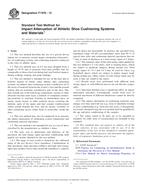
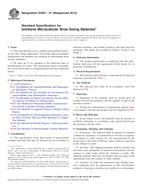 ASTM D3851-07(2012)..
ASTM D3851-07(2012)..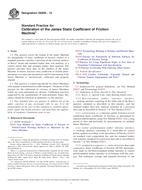 ASTM D6205-12
ASTM D6205-12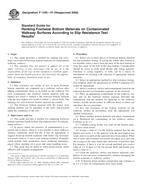 ASTM F1240-01(2009)..
ASTM F1240-01(2009)..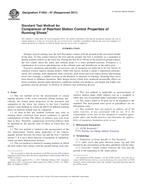 ASTM F1833-97(2011)..
ASTM F1833-97(2011).. ASTM F1900-98(2012)..
ASTM F1900-98(2012)..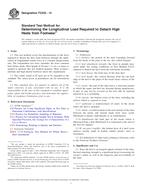 ASTM F2232-14
ASTM F2232-14
 Cookies
Cookies
